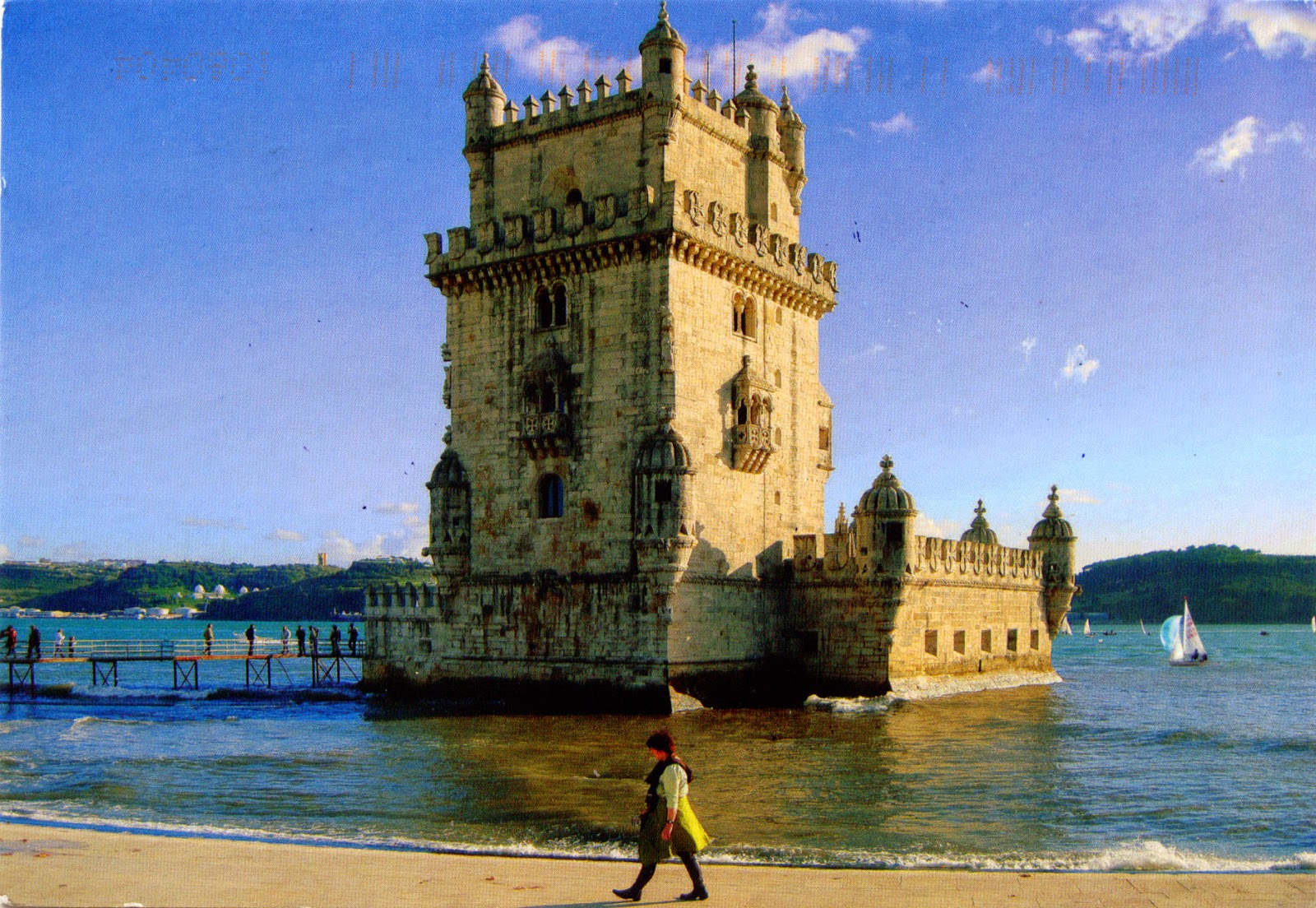0377 - posted on 06.11.2012
In the 15th and 16th centuries, as the result of pioneering the Age of Discovery, Portugal established a global empire (the first in history), becoming the world's major economic, political and military power. Most of the Portuguese expeditions left from Lisbon, which has become one of the richest cities in Europe. Standing at the entrance to its harbour, the Hieronymites Monastery (construction of which began in 1502), exemplifies Portuguese art at its best, and the nearby Belém Tower, built to commemorate Vasco da Gama's expedition, is a reminder of the great maritime discoveries that laid the foundations of the modern world. Both constructions were erected at the peak of Portugal's territorial expansion and of its economic and cultural flowering.
In 1496, Manuel I the Fortunate requested to the Holy See a authorisation to build a large monastery on the banks of the Tagus, just outside Lisbon, but the construction of the Hieronymites Monastery (or Jerónimos Monastery) began only in 1501, being completed 100 years later. Huge amounts of money was spend for this project, more accurate a sizeable part of Vintena da Pimenta, a 5% levy on income from trade
 with Africa and the Orient, or the equivalent of 70 kg of gold per year. Replacing a church dedicated to Santa Maria de Belém, it has a façade that extends for more than 300m, and is one of the most prominent monuments of the Manueline-style architecture. One of the main king's reasons for building this monastery was his desire to have a pantheon for the Avis-Beja dynasty, of which he was the first monarch. Manuel chose the Order of St. Jerome, or Hieronymites, to occupy the monastery. Their role, amongst other things, was to pray for the soul of the monarch and provide spiritual assistance to the seafarers and navigators who departed from the Restelo shorefront to discover new worlds. This religious community occupied the monastic spaces until 1833, when religious orders were dissolved in Portugal and the monastery was vacated.
with Africa and the Orient, or the equivalent of 70 kg of gold per year. Replacing a church dedicated to Santa Maria de Belém, it has a façade that extends for more than 300m, and is one of the most prominent monuments of the Manueline-style architecture. One of the main king's reasons for building this monastery was his desire to have a pantheon for the Avis-Beja dynasty, of which he was the first monarch. Manuel chose the Order of St. Jerome, or Hieronymites, to occupy the monastery. Their role, amongst other things, was to pray for the soul of the monarch and provide spiritual assistance to the seafarers and navigators who departed from the Restelo shorefront to discover new worlds. This religious community occupied the monastic spaces until 1833, when religious orders were dissolved in Portugal and the monastery was vacated.0103, 1220 - posted on 21.01.2012 and 13.09.2014
The Belém Tower, now on the shore of the Tagus, originally was built on an island closely located to the right bank of the river, opposite the Restelo beach. Erected to honor Lisbon’s patron St Vincent, it was meant to be part of the defensive system for the estuary of the Tagus River, providing crossfire with the fortress of São Sebastião da Caparica on the south bank, but also as a ceremonial gateway to Lisbon. Its construction started in 1514, under the orders of the architect Francisco de Arruda. Functional as it was, the tower was also a work of art built by a nation whose self-respect required that even a fortress should be magnificent. It is a marvelous example of the Manueline style, here represented by the stone rope that encircles the tower, by the heraldic motifs and by its most famous rhinoceros, the first stone representation of this animal made in Europe, that inspired Dürer’s rhinoceros; nevertheless, Belém Tower shows also elements of other architectural styles, mainly due to the influence of the Morocco fortifications where Francisco de Arruda worked.
It consists of a quadrangular tower, inspired by the medieval castles, and a polygonal bastion, designed to support heavy artillery. The monument is mostly decorated on the south side, characterized by the loggia with its impressively decorated balustrade. Above the loggia are the shield of D. Manuel I and the armillary spheres. On the first floor interior is the Sala do Governador (Governors Hall), and a small door provides access via a spiral staircase to the subsequent floors. On the second floor, the Sala dos Reis (King's Hall) opens to the loggia (to overlook the river), while a small corner fireplace extends from this floor to the third floor fireplace in the Sala das Audiências (Audience Hall). The fourth floor chapel is covered in a vaulted rib ceiling with niches emblematic of the Manueline style, supported by carved corbels. It was used as a fortress until 1580 when Portugal lost its independence and was ruled by Spanish kings for 40 years. Thereafter it was mainly used as a political prison, even when Portugal recovered its independence, as King Miguel I (1828–1834) imprisoned there his liberal opponents. Belém Tower was also used as a customs house and even as a lighthouse.
Read more »





